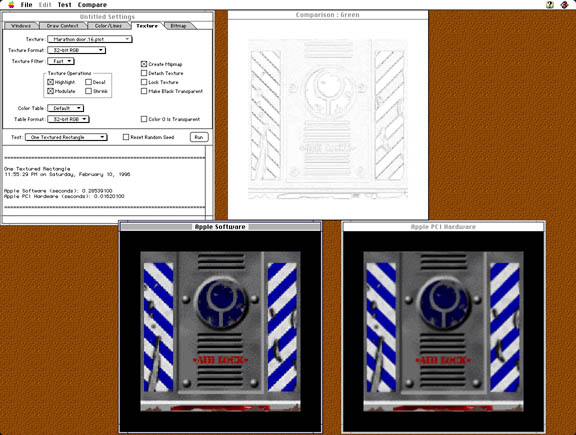As an engineer at Apple I designed and implemented a tool for developers of QuickDraw 3D accelerator cards. The app was written in C++ and used the PowerPlant class library.
One of the difficulties of creating an accelerator card is that QuickDraw 3D has a great many options and modes, all of which must be tested in their various combinations.
My application, Sneak3view *, eases this task by enabling the user to adjust each of QuickDraw 3D’s settings and to then run a test that draws an image into two windows. By comparing the output of an accelerator that is known to work (such as Apple’s) to their own, the user can more easily detect bugs in their 3D card.
Sneak3view was successful enough to inspire at least one company to state that they would support QuickDraw 3D on the PC if we would port Sneak3view to Windows.
Besides Sneak3view, I wrote some sample 3D applications that were distributed with the SDK. I also maintained a mailing list for QD3D developers and responded to their questions.
* Why the name Sneak3view? The hardware abstraction layer between accelerator cards and QD3D that eventually was called RAVE (for Rendering Acceleration something or other (but really because RAVE sounded cool)) was originally called TinselTown. A number of the associated tools and technologies had Hollywood-themed names, so I suggested SneakPreview for the testing app. Someone else suggested replacing “Pre” with “3”—hence Sneak3view.
